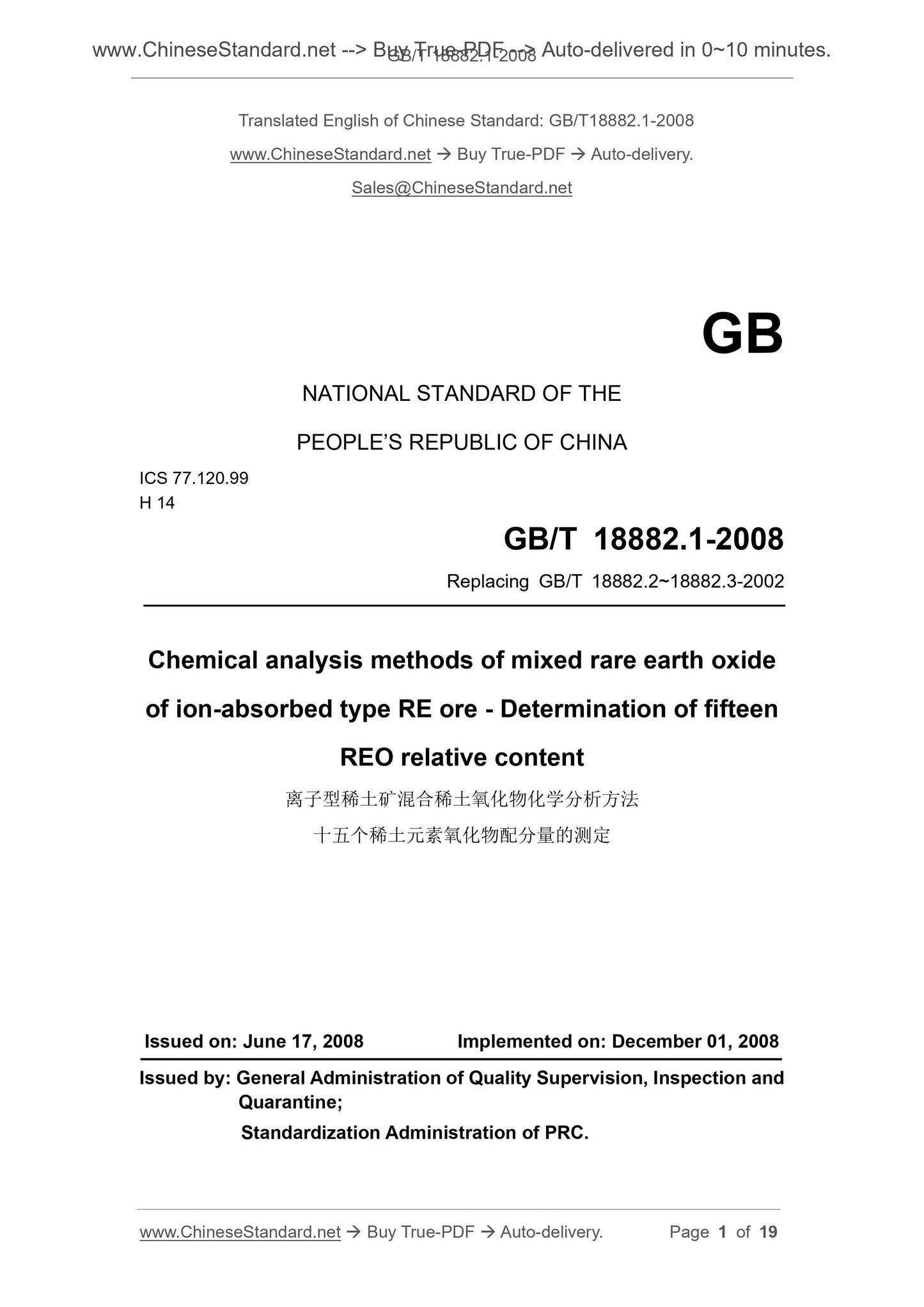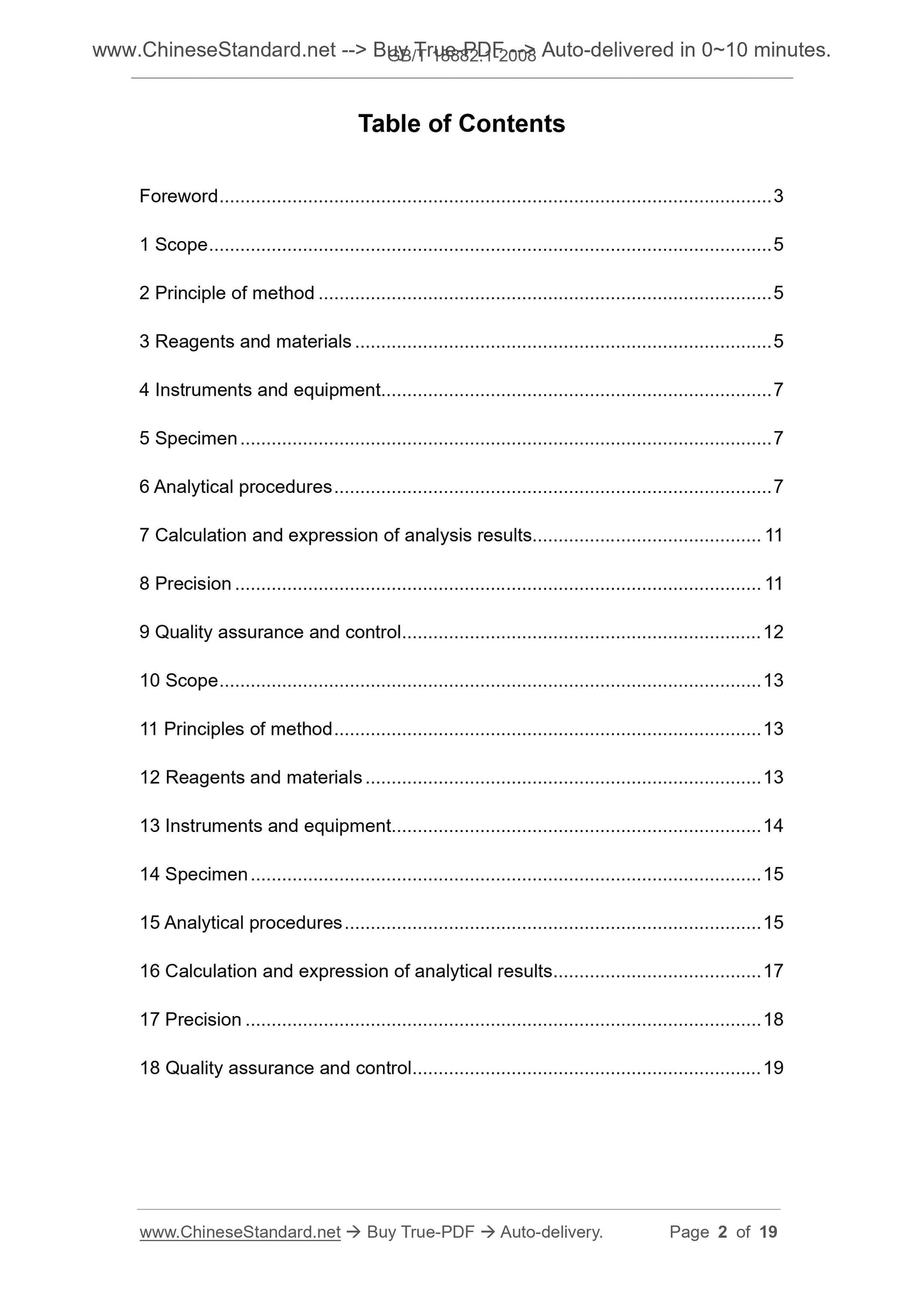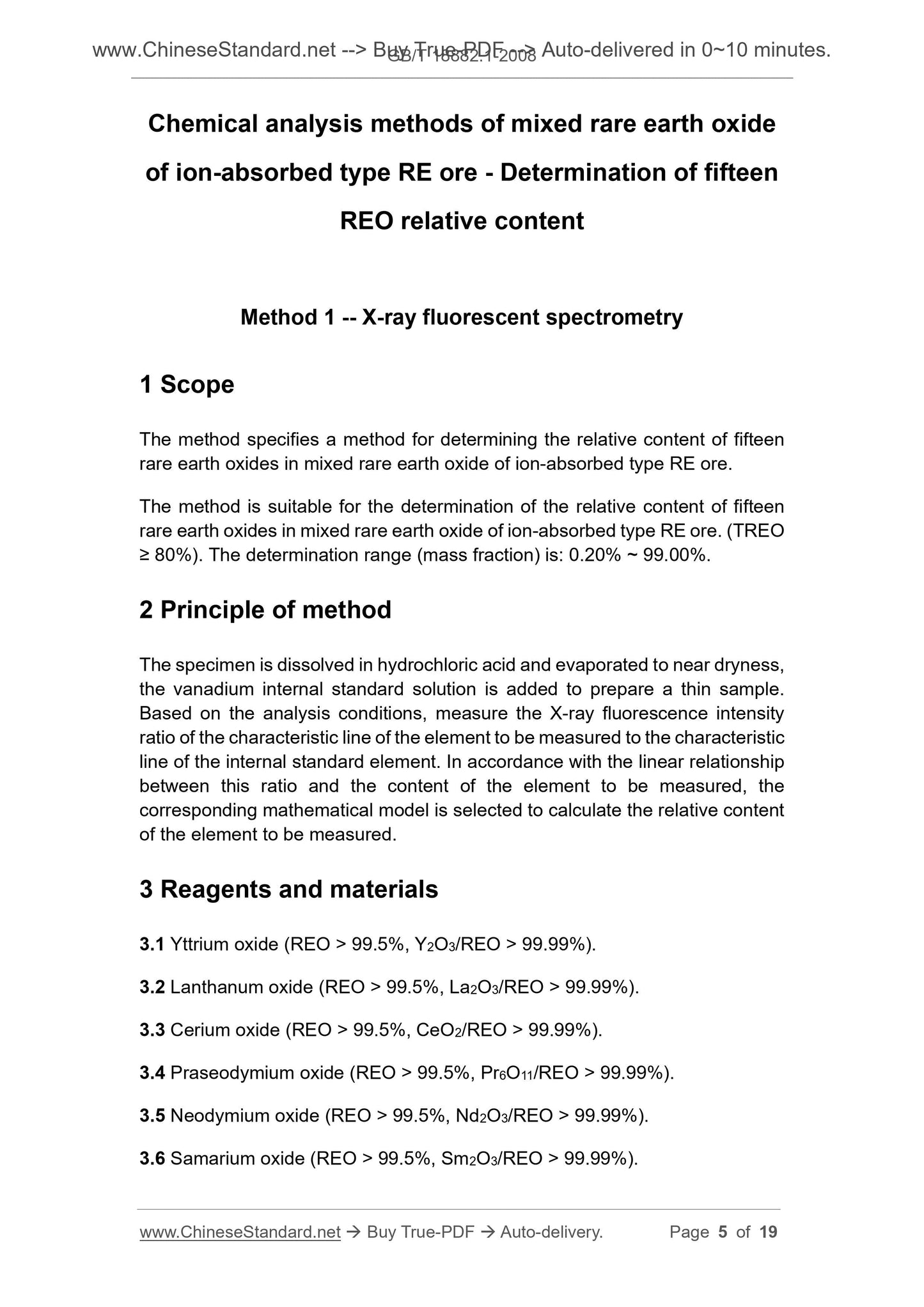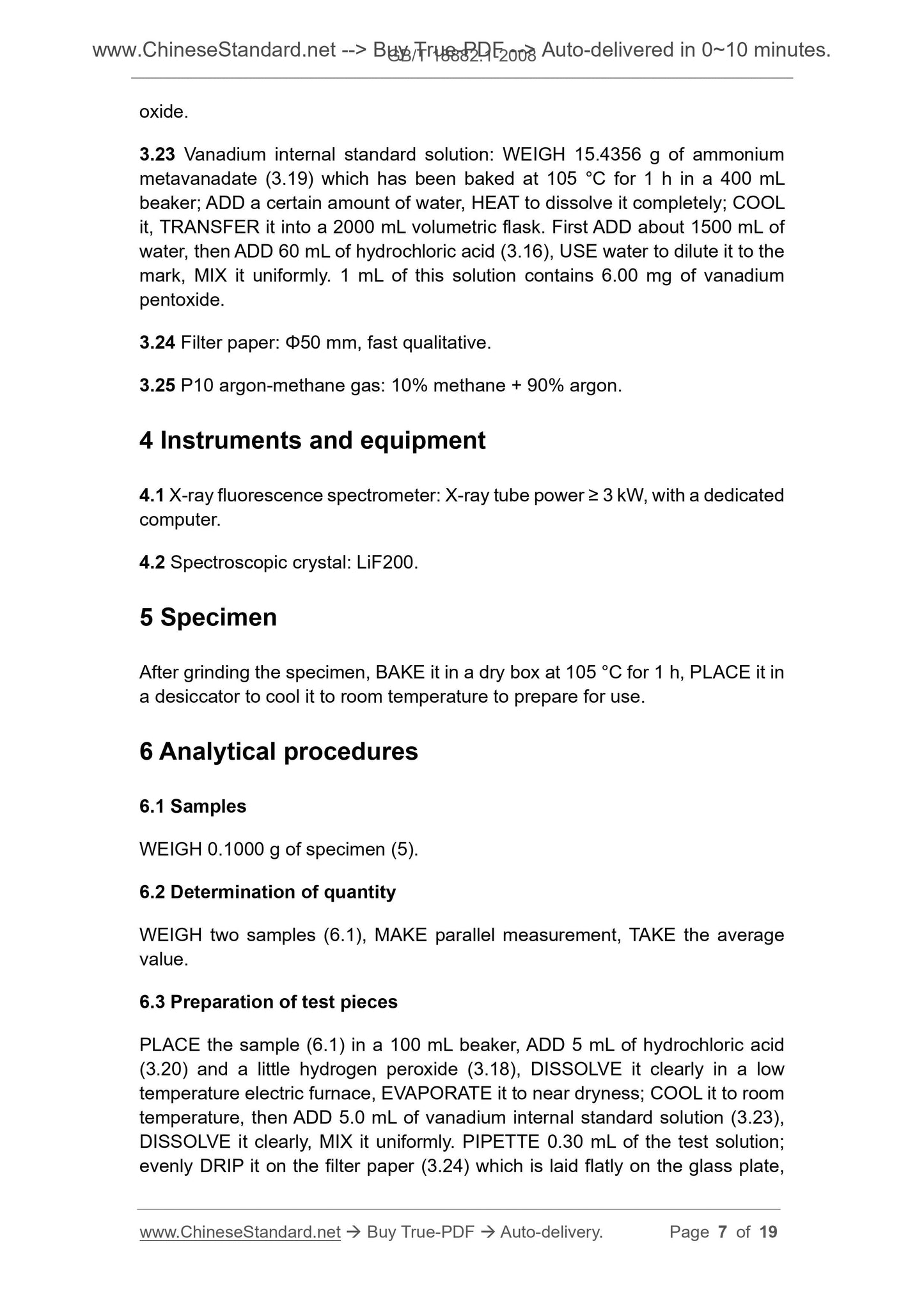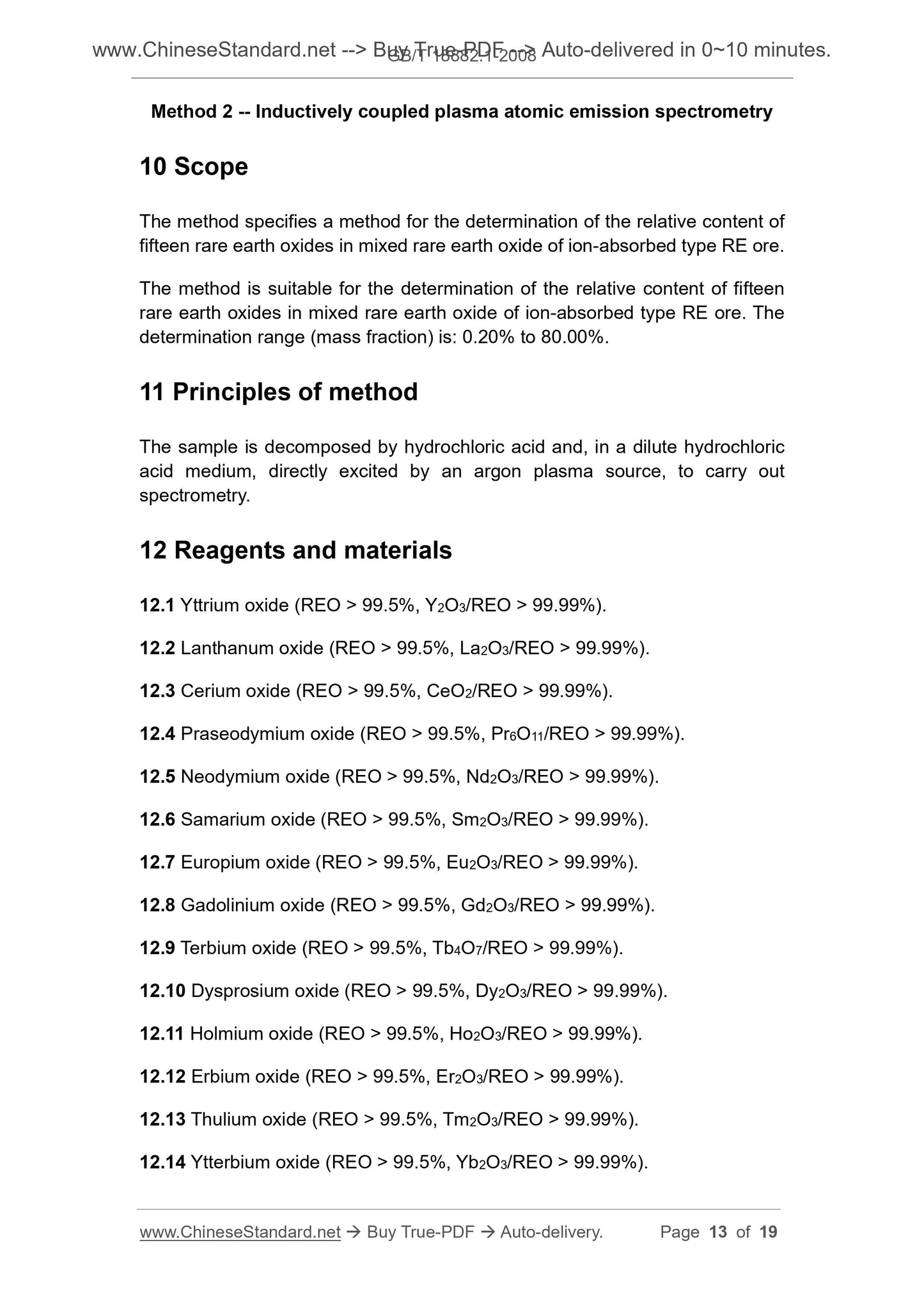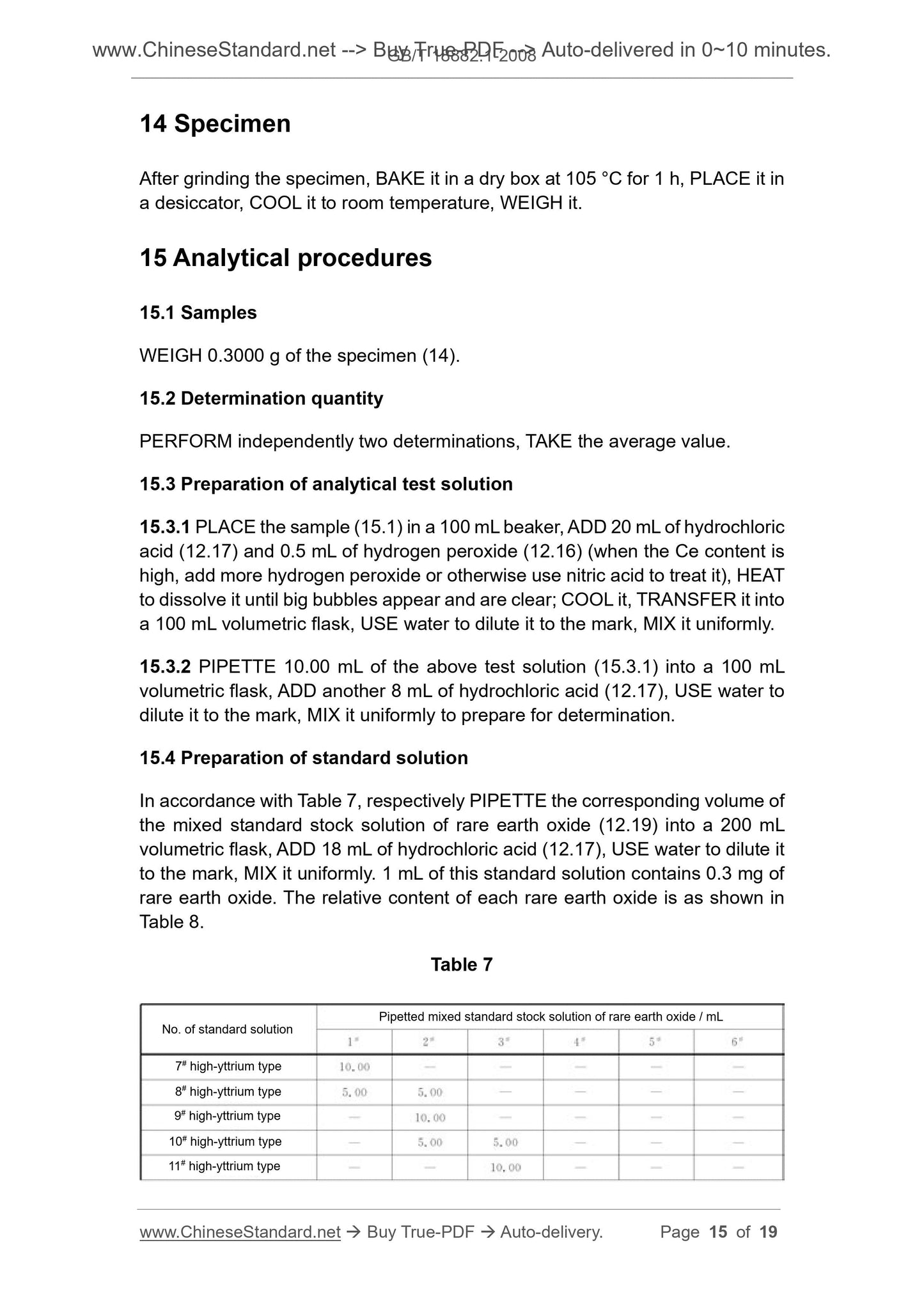1
/
of
6
PayPal, credit cards. Download editable-PDF and invoice in 1 second!
GB/T 18882.1-2008 English PDF (GB/T18882.1-2008)
GB/T 18882.1-2008 English PDF (GB/T18882.1-2008)
Regular price
$150.00
Regular price
Sale price
$150.00
Unit price
/
per
Shipping calculated at checkout.
Couldn't load pickup availability
GB/T 18882.1-2008: Chemical analysis methods of mixed rare earth oxide of ion-absorbed type RE ore -- Determination of fifteen REO relative content
Delivery: 9 seconds. Download (and Email) true-PDF + Invoice.Get Quotation: Click GB/T 18882.1-2008 (Self-service in 1-minute)
Newer / historical versions: GB/T 18882.1-2008
Preview True-PDF
Scope
The method specifies a method for determining the relative content of fifteenrare earth oxides in mixed rare earth oxide of ion-absorbed type RE ore.
The method is suitable for the determination of the relative content of fifteen
rare earth oxides in mixed rare earth oxide of ion-absorbed type RE ore. (TREO
≥ 80%). The determination range (mass fraction) is. 0.20% ~ 99.00%.
Basic Data
| Standard ID | GB/T 18882.1-2008 (GB/T18882.1-2008) |
| Description (Translated English) | Chemical analysis methods of mixed rare earth oxide of ion-absorbed type RE ore -- Determination of fifteen REO relative content |
| Sector / Industry | National Standard (Recommended) |
| Classification of Chinese Standard | H14 |
| Classification of International Standard | 77.120.99 |
| Word Count Estimation | 13,149 |
| Date of Issue | 2008-06-17 |
| Date of Implementation | 2008-12-01 |
| Older Standard (superseded by this standard) | GB/T 18882.2-2002; GB/T 18882.3-2002 |
| Regulation (derived from) | National Standard Approval Announcement 2008 No.10 (Total No.123) |
| Issuing agency(ies) | General Administration of Quality Supervision, Inspection and Quarantine of the People's Republic of China, Standardization Administration of the People's Republic of China |
| Summary | This standard specifies the type of rare earth ions in the mixed rare earth oxide ore fifteen rare earth element oxides with determination component. This method is suitable for ionic rare earth mine rare earth oxides (TREO �� 80%) in fifteen measured REE oxides mixed with components. Measuring range (mass fraction): from 0. 20% to 99. 00%. |
Share
